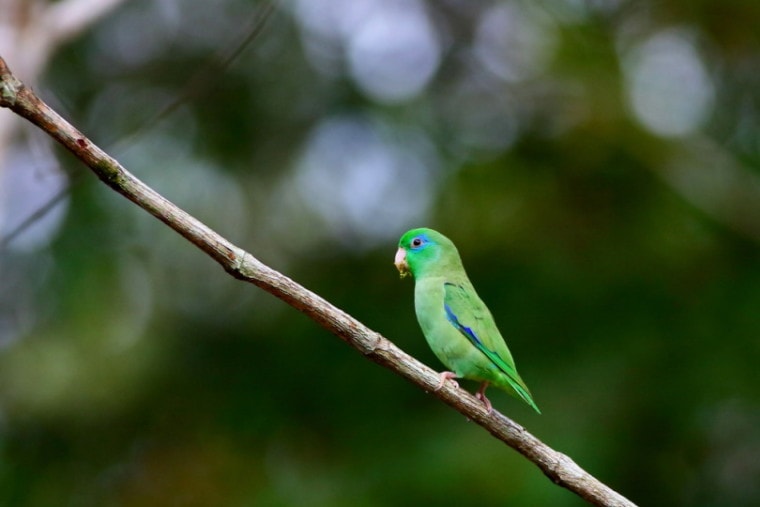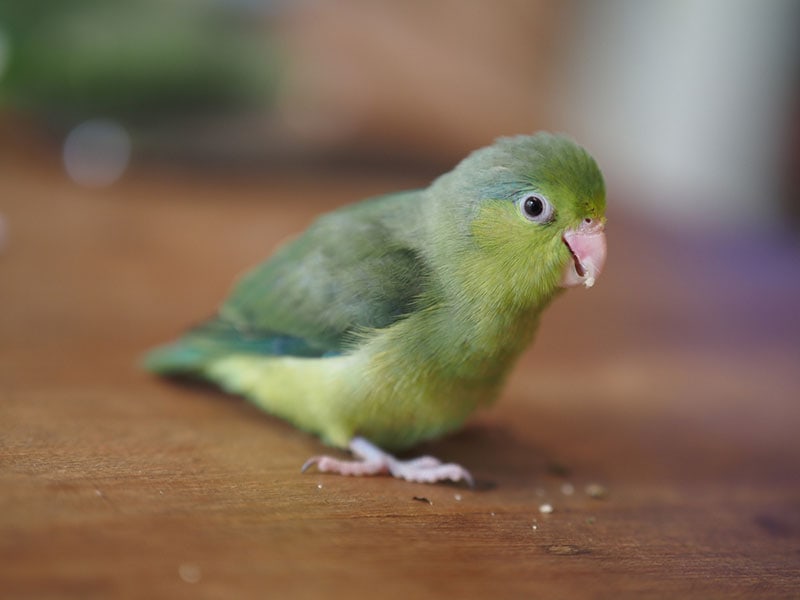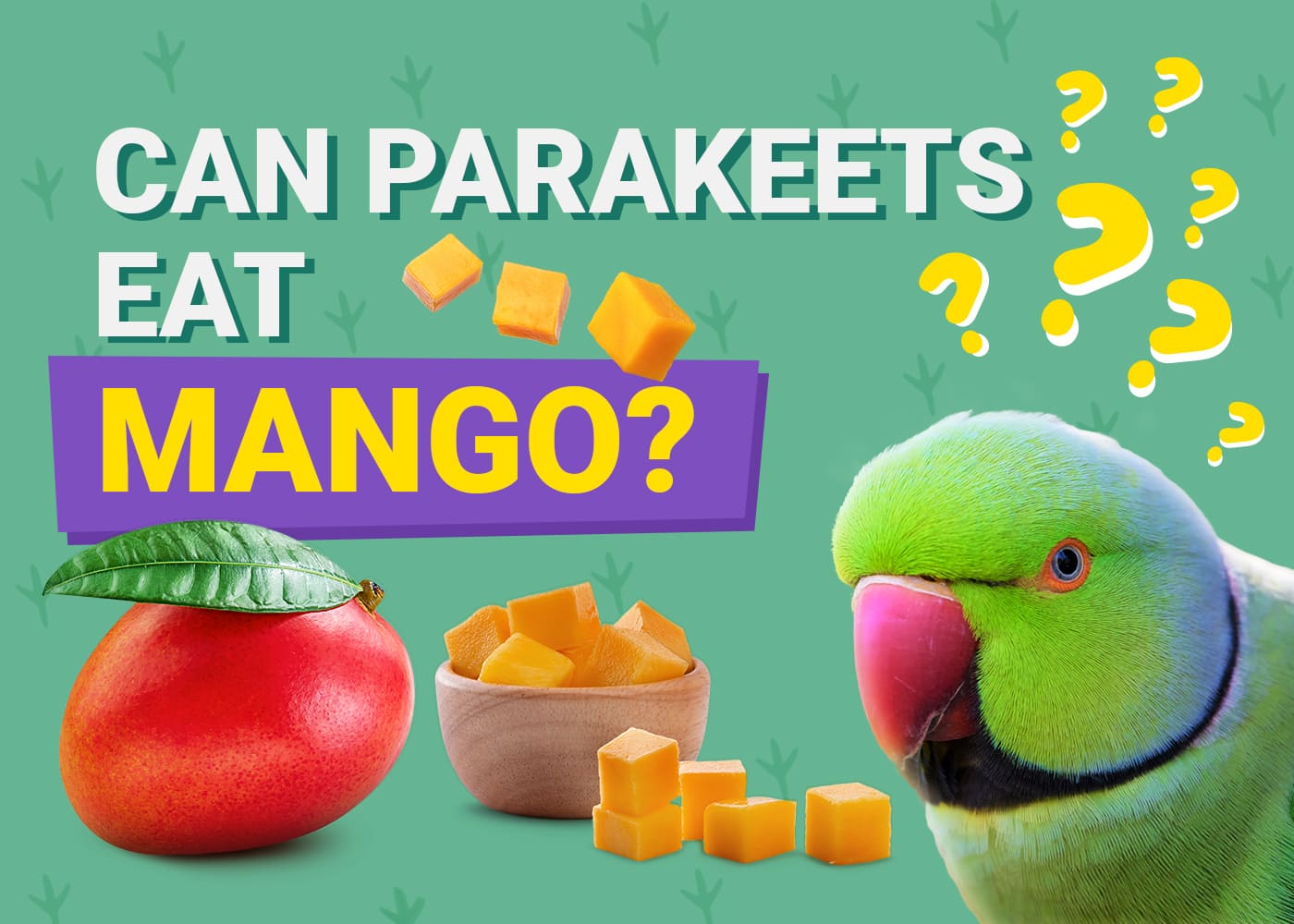
Small parrots and birds have long been popular choices for bird lovers, but in recent years, the beautiful Parrotlet has become one of the most sought-after. These little birds are just as intelligent, affectionate, and active as their larger cousins, yet they are far easier to care for and form just as strong bonds with their owners. They are the smallest birds in the parrot family, leading to their common nickname of “pocket parrots,” although their closest relation is the large Amazon Parrot, with which they share a few surprising similarities.
The Spectacled Parrotlet is a fairly rare variety of Parrotlet, with the Pacific Parrotlet being the most common species found as pets. Still, their popularity is steadily rising. In this article, we look at the personality of this beautiful bird and provide tips on their care and feeding. Let’s get started!
Species Overview

| Common Name: | Spectacled Parrotlet |
| Scientific Name: | Forpus conspicillatus |
| Adult Size: | 4-5 inches |
| Life Expectancy: | 20-25 years |
Origin and History
The Spectacled Parrot is native to large regions of Central and South America, including Panama and Columbia. Their habitat consists mostly of tropical forests, thorn scrub, and low-density woodlands. They tend to stick to lowland areas and are not found at altitudes above 5,200 feet. Their distinctive green and blue coloring helps them blend into the forest canopy and stay out of sight of predators, an essential trait for such a small bird!
It’s widely believed that Parrotlets descended from Amazon Parrots due to their similarities in plumage and personality. Although there is no DNA evidence to conclusively prove this, people who have owned or spent time around both birds will attest to their surprisingly similar temperaments.
Temperament

Like many other parrot species, Spectacled Parrotlets are social, affectionate, and curious and form strong bonds with their owners and mates, often mating for life. With their small size comes a large and bold personality, though. These parrots are often described as “feisty” and “mischievous” by their owners. They can be territorial at times, are highly protective of their cage, and are known to nip or bite when they feel threatened.
They are intelligent birds that can be taught a wide variety of tricks, and while they are not as vocal or as loud as their larger cousins, they can be taught to mimic speech too. They are notoriously affectionate birds that love to nuzzle into their owner’s clothing or blankets, often falling asleep there! They are also known to be playful, a great trait most of the time but one that can sometimes lead to mischievous behavior too.
In the wild, these birds are known to be territorial and defensive and will fight birds much larger than them in defense of their nests and territory. So, if you have other birds in your home already, this is something that you’ll need to be aware of.
Speech & Vocalizations
Spectacled Parrotlets are certainly not as loud and noisy as their larger cousins, but they do chirp and tweet throughout the day. They make various chirping and buzzing sounds that are different depending on their mood and the characteristic high-pitched chirps that they use to get your attention!
These Parrotlets can learn to talk, but it will take a fair amount of training, and they are certainly not as adept as other parrot species. Males are also far more likely to talk than females, although the exact reason for this is unknown. With the right upbringing and training, Parrotlets can learn to speak a handful of words and phrases.
Spectacled Parrotlet Colors and Markings

The Spectacled Parrotlet has a rich green body with a rosy beak and distinctive light blue circles around their eyes that give them their name. This light blue coloring also extends to their wings and tail feathers but is subtle or non-existent on females. Their belly is slightly lighter green than the rest of their body and can be almost yellow in appearance in certain individuals.
Caring for the Spectacled Parrotlet
Parrotlets in the wild are social animals that live in large flocks of up to 100 birds, although in captivity, they are best kept alone or in pairs. This is because they are so territorial and often prone to fighting, but they will also form a far stronger bond with their owner if kept alone. If you do decide to get pair, two females are best because they’ll be far less likely to fight than males, and a male and female together will likely breed, a process best left to experts.
Their cage needs to be large enough for them to stretch their wings and climb, so the bigger the cage that you can provide, the better. That said, time outside of their cage is essential too, and around 2-3 hours per day should be the minimum. Perches, ropes, ladders, and toys should be provided to keep them active and mentally stimulated, along with a small bowl of water for them to bathe in — they’ll love it!
Common Health Problems
Even though these birds are tiny and seemingly fragile, they are actually hardy and healthy birds that with the right care, can live for 20 years and beyond. They rarely suffer from any serious health issues, provided that they have a healthy diet and plenty of physical and mental stimulation.
That said, an annual health checkup from an avian vet is highly recommended to make sure your bird is healthy and happy or if they display any of the following symptoms:
Diet and Nutrition

The best diet for a Parrotlet is a pellet-based diet because this will provide all the nutritional requirements for your bird. You can supplement these pellets with seeds and occasional fruits and vegetables as treats. Sprouted seeds are also great additions, as are a cuttlebone for added calcium and a mineral block. Despite their small size, these birds have a high metabolism and can eat a surprising amount of food.
Exercise
Parrotlets are active birds that need plenty of space and toys to keep them happy and mentally stimulated. Climbing ropes, ladders, and interactive toys are ideal for making sure your Parrotlet gets the required exercise. Another great form of exercise is to get them to beat their wings. Place them on your arm, making sure they are secure, and move your arm up and down gently. This will encourage them to flap their wings and is a great source of daily exercise and interaction.
Where to Adopt or Buy a Spectacled Parrotlet
If you decide to bring home a Spectacled Parrotlet, consider getting one from an adoption agency or rescue organization. There are plenty of Parrotlets in need of a home, and this will cost far less than purchasing one from a breeder. Depending on the age of the parrot and the agency that you choose, you can expect to pay as little as $50 to adopt a Parrotlet or up to $300 if accessories are included.
Purchasing a Parrotlet from a breeder will be more expensive than adopting, but you can usually guarantee a healthy bird free of any genetic issues or past trauma. Most common Parrotlet species go for $150-$200, but rarer varieties, like the Spectacled Parrot, can go for $800 or more.
Final Thoughts
The Spectacled Parrotlet is a gorgeous little “pocket parrot” and is steadily gaining popularity as a pet. They are just as lively, intelligent, and affectionate as their larger cousins, but they are easier and less expensive to care for overall, and this is what makes Parrotlets of any species such popular pets. Still, these parrots have long lifespans of 20 years or more and are a long-term responsibility that should not be taken lightly.
If you’re looking for an easy-going, docile, and affectionate pet bird that doesn’t take up much space, the Spectacled Parrotlet is an ideal choice!
Featured Image Credit: Gergo Nagy, Shutterstock








